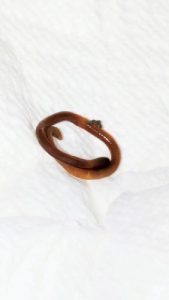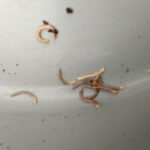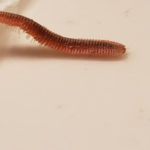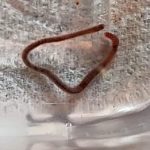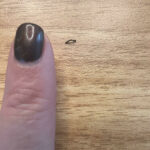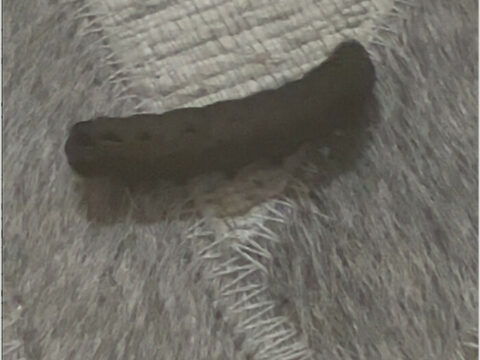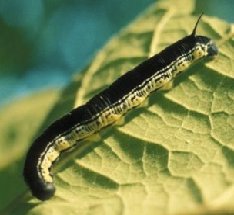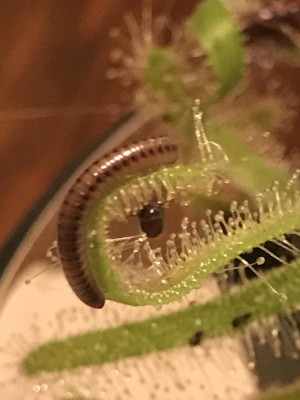
Worms are typically thought of as the bane of a gardener’s existence. They chew through the leaves and stems of the very plants they spend time cultivating and nurturing and end up killing them, making it very frustrating for gardeners who are trying to get a good crop harvest going. However, there are certain garden worms that people do welcome, both for purposes of benefiting the miniature ecosystems they are building in their backyard and for the roles they play in superstition and folklore.
To begin with, earthworms are likely the most common of worms that people welcome in their gardens. This is because the presence of earthworms is beneficial to soil health and maintenance. Earthworms break down organic matter, such as leaf litter, and produce nutrient-rich faeces that acts as fertilizer for plants, and so their presence is an indicator of good, healthy soil. In fact, earthworms are so vital to the environment that we wrote an entire article about what planet Earth would be like without earthworms.
Following this, millipedes are usually welcomed with open arms for the same reason. It is a common misconception that millipedes are creepy crawlers that are up to no good and out to get you, but this is usually based on their appearance or people’s tendency to confuse them with centipedes. However, despite their many legs, millipedes are peaceful creatures who are very beneficial for the environment. Like earthworms, they too help to break down decomposing organic matter and ‘recycle’ it in a way, returning nutrients to the soil through their waste. This is a lesson to everyone who judges a worm by its cover! Just because they look creepy does not mean they cannot be friendly.
Furthermore, we come to a rare case of a caterpillar that is revered by gardeners. Most caterpillars are despised by people who are trying to maintain a garden, as their destructive nature and large numbers kill plants at a rapid pace that is difficult to keep up with. That being said, there is a species of butterfly whose caterpillars are welcomed with open arms by gardeners, namely the monarch butterfly. Seeing as this butterfly is regarded as the ‘king of butterflies’ as well as the most beautiful butterfly of them all, people may be biased in being amiable toward the caterpillars of this butterfly, and not toward others, but there are also legitimate reasons for people not minding these caterpillars in their gardens. Perhaps it because the list of host plants that they feed on is limited to milkweed and thus there is not much their larvae would destroy. It could also be due to the assurance that they will eventually metamorphose into the beautiful and adored monarch butterfly which will pollinate one’s plants, thus proving themselves environmentally beneficial.
Finally, we come to the woolly bear worm. Otherwise known as the Isabella tiger moth caterpillar, we covered this worm recently in an article on furry caterpillars, in which we warned our readers not to touch worms like this one because of the risk touching bristles poses in terms of causing irritation of the skin or triggering allergic reactions. Despite this, as well as the fact that woolly bear worms do feed on a number of plants, people are very fond of this hairy critter. This is due to the folklore surrounding this worm. According to the tales, the width of the red bands that cross the caterpillar’s back can be used to predict the harshness of the upcoming winter. In fact, the woolly bear worm is so celebrated across North America that festivals are held in its honor! Plus, woolly bear worms would rather munch on plants like clover and dandelions than your garden.
To conclude, this has been a list of worms that gardeners usually don’t mind finding in their gardens. They are few and far between, but when one does find them, they can bask in the knowledge that their garden can provide a cozy home to these kind critters, as well as establish a mutually beneficial relationship with these environmental worms! We hope our readers found something of interest in this article, and that they are staying cozy and safe inside their homes during these strange times.
All About Worms is always free, always reader-supported. Your tips via CashApp, Venmo, or Paypal are appreciated! Receipts will come from ISIPP Publishing.
You might also find these guys interesting!

